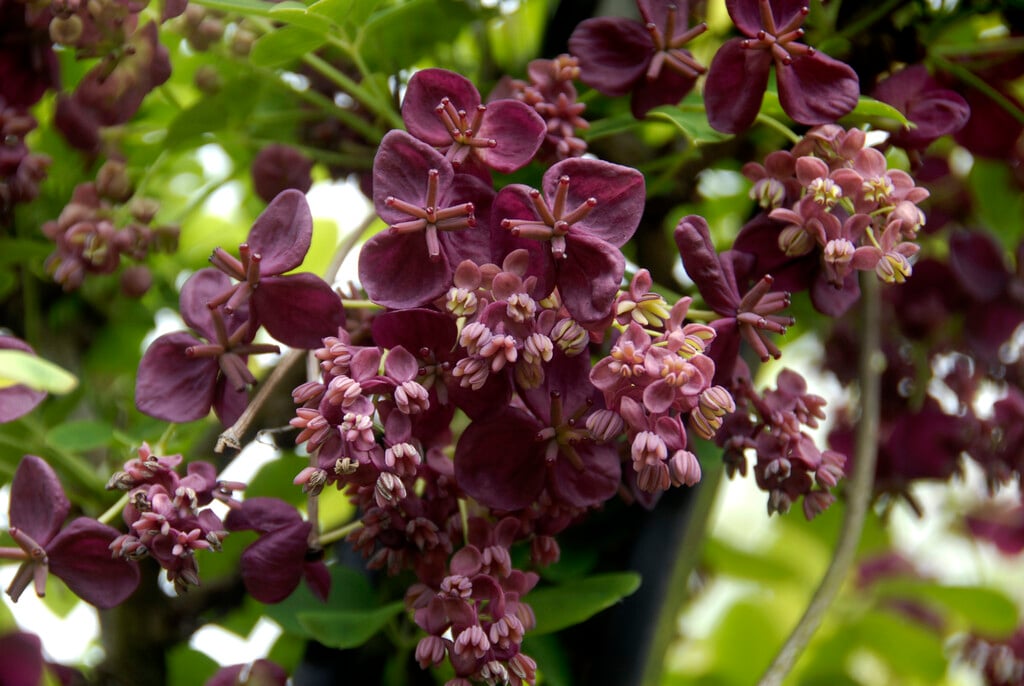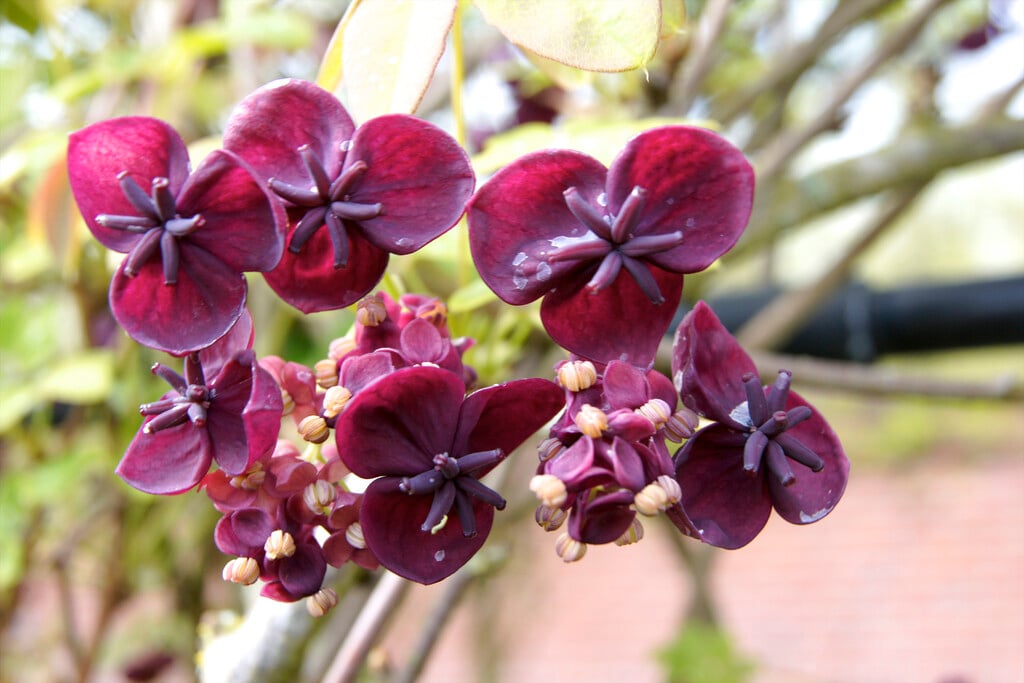Akebia quinata
chocolate vine
Semi-evergreen climber about 10m tall, with rounded dark green leaves, blue-green below, composed of five leaflets and tinted purple in winter. Fragrant reddish-purple flowers, in racemes 12cm long, produced in early spring are sometimes followed by purple sausage-shaped fruits to 10cm in length
Size
Ultimate height
8–12 metresTime to ultimate height
5–10 yearsUltimate spread
Wider than 8 metresGrowing conditions
Moisture
Moist but well–drainedpH
Acid, Alkaline, NeutralColour & scent
| Stem | Flower | Foliage | Fruit | |
| Spring | Purple Red | Green | ||
|---|---|---|---|---|
| Summer | Green | |||
| Autumn | Green | Purple | ||
| Winter | Green Purple |
Position
- Full sun
- Partial shade
Aspect
South–facing or North–facing or West–facing or East–facing
Exposure
Exposed or Sheltered Hardiness
H6Botanical details
- Family
- Lardizabalaceae
- Native to GB / Ireland
- No
- Foliage
- Semi evergreen
- Habit
- Climbing
- Genus
Akebia are vigorous twining, semi-evergreen climbing shrubs, with attractive palmate or trifoliate leaves and racemes of cup-shaped purplish female and smaller male flowers, followed by large, sausage-shaped fruits, if cross-pollinated by another clone
- Name status
Correct
- Plant range
- China, Korea, Japan
How to grow
Cultivation
A climber that thrives with any good garden soil in sun or part shade. Fruit - needs long hot summers to fruit well and two plants of the same species to ensure cross pollination
Propagation
Suggested planting locations and garden types
- Cottage and informal garden
- Climber and wall shrubs
- Wall side borders
- Edible fruit
Pruning
Pruning group 11 after flowering
Pests
Generally pest-free
Diseases
May be susceptible to honey fungus (rarely)
Love gardening
Sign up to receive regular gardening tips, inspiration, offers and more
View our Privacy Policy
Get involved
The Royal Horticultural Society is the UK’s leading gardening charity. We aim to enrich everyone’s life through plants, and make the UK a greener and more beautiful place.

